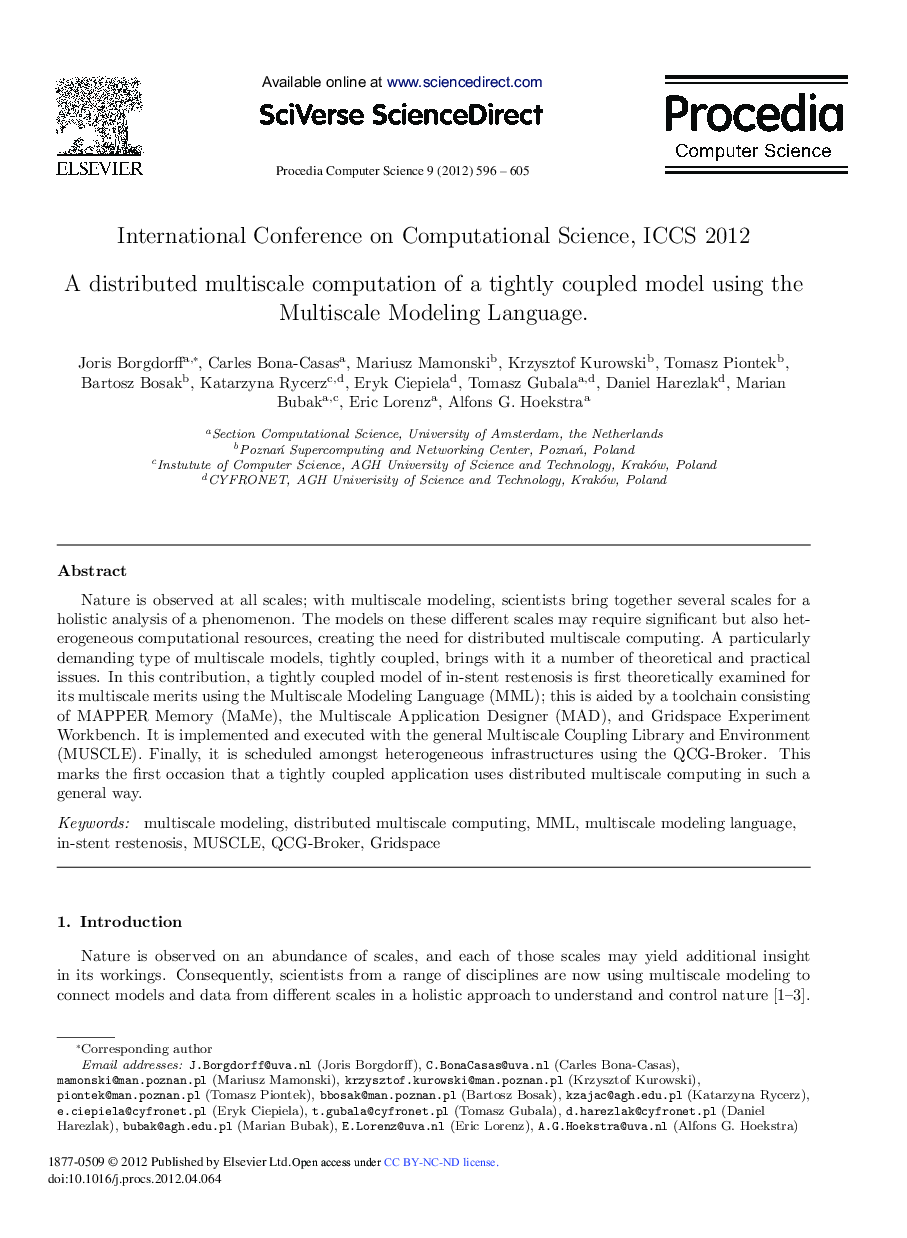| Article ID | Journal | Published Year | Pages | File Type |
|---|---|---|---|---|
| 486727 | Procedia Computer Science | 2012 | 10 Pages |
Nature is observed at all scales; with multiscale modeling, scientists bring together several scales for a holistic analysis of a phenomenon. The models on these different scales may require significant but also heterogeneous computational resources, creating the need for distributed multiscale computing. A particularly demanding type of multiscale models, tightly coupled, brings with it a number of theoretical and practical issues. In this contribution, a tightly coupled model of in-stent restenosis is first theoretically examined for its multiscale merits using the Multiscale Modeling Language (MML); this is aided by a toolchain consisting of MAPPER Memory (MaMe), the Multiscale Application Designer (MAD), and Gridspace Experiment Workbench. It is implemented and executed with the general Multiscale Coupling Library and Environment (MUSCLE). Finally, it is scheduled amongst heterogeneous infrastructures using the QCG-Broker. This marks the first occasion that a tightly coupled application uses distributed multiscale computing in such a general way.
